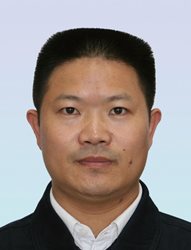Commissioning Fuqing 5&6
The Fuqing nuclear power plant, owned and operated by Fujian Fuqing Nuclear Power Company (FQNPC) consists of six GW-scale nuclear power units that have started up sequentially since August 2014. Units 1-4 are derived from the French M310 design and designated as M310+, and units 5&6 are CNNC’s demonstration Hualong One units
The HPR1000 have a number of similarities to units 1-4 at the Fuqing plant. Both designs are conventional three loop PWRs, with similar conventional island designs. At the same time, as a third-generation reactor design, the Hualong One employs passive as well as active safety systems to enhance defence-in-depth. Passive systems include containment heat removal, secondary side residual heat removal, and reactor cavity water injection.
The number of core fuel assemblies in the Hualong One is 177, increased from 157 in the M310+. The average linear power density is reduced while the rated power of the core is increased, which not only increases the power generation capacity of the nuclear power plant (1075 MWe net, compared with 1000 MWe) but also improves the safety margin of nuclear power operation.
The Hualong One technology has been developed by China National Nuclear Corporation (CNNC) on the basis of more than 30 years of experience in nuclear power research, design, manufacturing, construction and operation. As well as combining active and passive severe accident prevention and mitigation measures, the design incorporates feedback and improvements resulting from the March 2011 accident at the Fukushima Daiichi plant in Japan.
The first Hualong One – Fuqing 5 – was connected to the grid on 27 November 2020, setting a record construction time of 66.7 months for a first-of-a-kind third-generation nuclear power plant design. Fuqing 6 entered commercial operation on 25 March 2022, marking the full completion of the demonstration project.
Interviewee: Jia Yuqiang, Plant Manager of Fuqing 5&6, CNNC Fujian Fuqing Nuclear Power Company

Have there been any specific challenges during the commissioning process?
As the demonstration plant of the Hualong One, the commissioning of Fuqing 5&6 presented not only a heavy workload due to the first application of a large number of new technologies but also posed many challenges, including first-of-a-kind unit tests and new design verification.
The first unit test is a new commissioning test carried out only on the first unit of a new nuclear power reactor type. The first reactor test of Hualong Oneconsists of five tests in total. Fuqing Unit 5 organically combined the front end and back end of the whole project through special test organization and management, commissioning, construction and installation, integrated design office, sand table deduction in advance, and so on, so as to find and solve problems in the first place, such as the rapid cooling and secondary side passive heat exchange capacity verification test, the use on-site simulator resources to verify test schemes and risk plans in advance, and check test results in advance. All the first unit tests were successful at the first attempt.
The new design concept of combined active and passive safety for the Hualong One creates challenges for the project integrity, the applicability of the commissioning scheme, and compliance of the commissioning results of the first unit. The commissioning team established a problem-oriented coordination mechanism and improved problem-solving efficiency through risk management, joint headquarters, and other management innovations.
At the same time, commissioning experience feedback for the previous unit at the site allowed for careful planning to be carried out. For example, differentiation analysis was carried out according to the design characteristics of Hualong One. This led to more than 60 differential adjustments of commissioning items and nearly 100 differential adjustments of acceptance standards compared with the M310+.
Improvements were continuously carried out; for example, during the commissioning of Fuqing 5, more than 20 verification and commissioning items were supplemented to ensure the comprehensive and high-quality completion of unit commissioning tasks.
How will the experience gained in the construction of these domestic demonstration plants benefit the construction of HPR1000 units in overseas projects in Pakistan and beyond?
Construction contractors can visit the Fuqing units to get a deep understanding of the design’s technical characteristics and construction and operation experience. They can also receive on-the-job training in the relevant project management discipline.
The project management team have summarized the construction experience of domestic demonstration projects and issued the HPR1000 Standardization Technical Manual and HPR1000 Standardization Management Manual, which can be used as a reference for overseas construction contractors of such units.
For overseas units under construction, experienced project management personnel from domestic demonstration projects can be employed to provide onsite support services. Domestic demonstration projects can also provide remote services such as project management consultation and technical support for overseas construction contractors of HPR1000 units.
Staff at overseas units under construction can also establish cooperative relations with domestic demonstration plant staff to carry out activities such as engineering construction experience feedback, mutual visits of key personnel, overseas onsite observation and guidance, and benchmarking of the engineering construction system.
The Fujian Fuqing Nuclear Power Company is preparing for the establishment of an HPR1000 owners group, which can share information on HPR1000 construction, operation and maintenance, technical management, personnel training and other areas with all HPR1000 owners to jointly improve HPR1000 construction and operation performance.